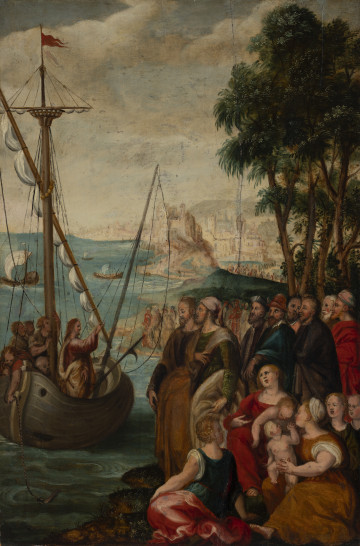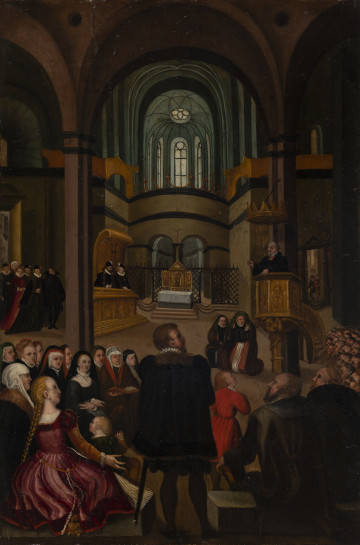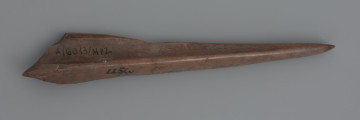
Kazanie z łodzi | Sermon from the boat
3. ćwierć XVI wieku
National Museum in Szczecin
Part of the collection: Court art of Pomeranian dukes in 16th and 17th century
Sacral painting in the 16th century became a focus of debates related to the Reformation movement. Many of the biblical scenes popular at the time were often given additional dimensions which were either symbolic or political in nature. The Temptation of Christ is one of five paintings in the body of the pulpit found in the castle church in Szczecin, reportedly dating back to the 16th century. Although unconfirmed, its arrival was linked to the construction of a new castle church around 1577 during the reign of Pomeranian Duke John Frederick, whose father, Philip I, together with his uncle Duke Barnim IX, introduced Lutheranism as the dominant religion in Western Pomerania. The foreground of this painting shows Satan reaching out to Jesus with his hands full of stones and encouraging him to turn them into bread. However, the scene has clear symbolic and political overtones. For Satan is dressed in monastic garb and a cardinal's hat, which alludes to the vestments of the Catholic clergy, thus serving as a Protestant critique of false piety and the abuses committed by the Catholic Church. The rest of the narrative corresponds to the story recounted in both the Gospel of St. Matthew and the Gospel of St. Luke, however it was conveyed quite subtly by the author, who attributed a large role in their discovery to the landscape stretching behind the trees. Centrally located in the depths, the city and the hill on the left reveal further acts of New Testament parables. A skilled eye will spot two figures on the mountaintop. It is here that the devil offers Christ the riches of the world and entices him to bow down. Meanwhile, further up on the roof of the temple, we can again see the outlines of two figures. One of them points to something with his hand. It is the devil urging Christ to throw himself into the abyss and prove that he is the Messiah. For the record, Matthew and Luke told the story slightly differently, changing the order of the temptations. The painting, on the other hand, depicts the various scenes simultaneously, so that it could serve to illustrate both Gospels. Justyna Bądkowska
Author / creator
Object type
painting
Technique
oil technique
Material
plank
Origin / acquisition method
purchase
Creation time / dating
Creation / finding place
Owner
Muzeum Narodowe w Szczecinie
Identification number
Location / status

3. ćwierć XVI wieku
National Museum in Szczecin

3. ćwierć XVI wieku
National Museum in Szczecin

9600 p.n.e. — 4100 p.n.e.
National Museum in Szczecin
DISCOVER this TOPIC
National Museum in Lublin
DISCOVER this PATH
Educational path